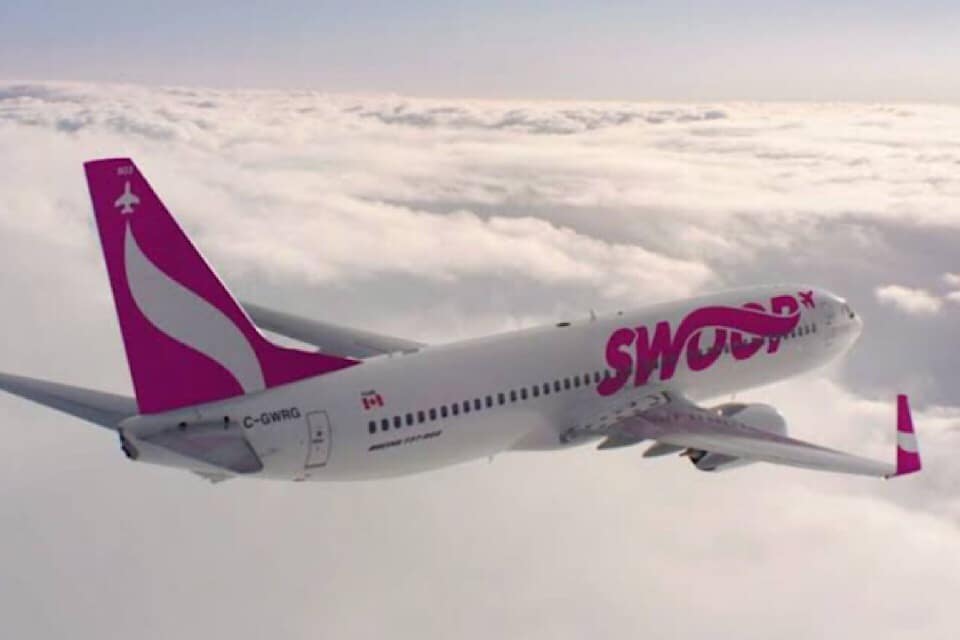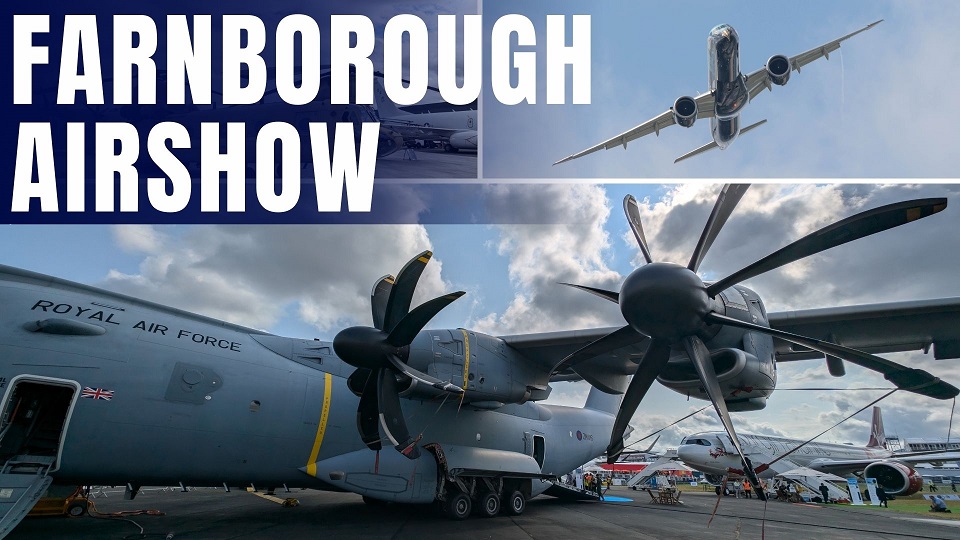Aviation
April 1 Alert: Swoop brings lie-flat seats to its single class cabin

An industry leader in innovation, Swoop breaks the mould on the ultra-low-cost model with its Recline-for-a-Dime™ product
CALGARY, April 1, 2019 /CNW/ – Swoop has set a new bar in ultra-low-cost unbundling with the introduction of its Recline-for-a-Dime™ product. The feature, expected to be configured across the fleet by the end of April 2019, allows travellers to insert a dime into the armrest of their seat in exchange for two-inches of 30-minute timed recline. Credit card tap is also enabled for even more convenience.
The cost to lie completely flat is $0.90, though travellers can fully customize the amount of time and the degree of recline they prefer, in $0.10 increments. When the time is up, the seat gently returns to its upright position. Swoop’s Flatter-than-Flat feature is offered for an additional $0.10, allowing travellers who have purchased the lie-flat option to further stretch their spine.
“Lie-flat luxury seating seems to be all the rage these days,” said Steven Greenway, President of Swoop. “Our travellers now have the option for a premium experience without breaking the bank. It’s a pivotal moment in the world of ultra-low-cost travel and only the beginning for product innovation at Swoop.”
Staying true to the ultra-low-cost model, Swoop cut the cost of reclining from the fare so travellers are only paying for what they use. Swoop is the only airline in the world to have the patent-pending air-worthy automated seat-recline technology.
“An innovation that truly has your back….”
For years, ULCC’s have been targeted for having cramped, unfriendly seats. Wanting to dispel this stereotype, Swoop conceived Recline-for-a-Dime™ while inadvertently discovering a few added benefits. Studies have shown that reclining at least six inches every 20 minutes on flights over 1.5 hours increases circulation and prevents thrombosis and swelling. Studies have also concluded a relationship between reclining and a reduction in jet lag. All the more reason to recline for a dime.
“It’s about dime! Recline.”
The standard degree of recline on most airlines that offer a premium economy option is eight inches. Market research has shown potential dissatisfaction from those seated behind a seat that is reclined more than this. In these cases, the non-reclining traveller can purchase Swoop’s 5-degrees-of-freedom option, which prevents the seat in front from reclining past the eight-inch satisfaction threshold.
The feedback from the cabin crew has been overwhelmingly positive. With the automated seat technology in place, gone are the days of monitoring that all seats have been returned to their upright position for take-off and landing.
Swoop expects to further develop the offering by introducing dynamic lumbar support, massage, motion-sync to streaming music and discounted recline-credits for the frequent traveller.

Aviation
Farnborough 2024: A Landmark Airshow Concludes with £81.5 Billion in Deals

As the 45th edition of the Farnborough International Airshow (FIA2024) concluded, it proved to be a tremendous success. The event, which ended yesterday, saw £81.5 billion worth of deals signed and 260 firm commercial aircraft orders placed within the first four days. For the UK alone, the deals announced amounted to £13 billion.
The show ended with an exhilarating final air display. The Starlings Aerobatic Team performed an impressive formation flight, while the Stampe Formation team showcased their vibrant heritage aircraft. The Royal Air Force’s F-35 flyover and the F-15QA’s powerful farewell flight added to the excitement. The British Army’s renowned Red Devils parachuted down, providing a spectacular closing to the event.
Day 2 Highlights: Airbus, Boeing, and Embraer Orders at Farnborough International Airshow 2024 : Click here
With this year’s orders finalized, the focus on the fifth and final day of FIA2024 shifted to inspiring the next generation of pilots, engineers, manufacturers, and innovators. We eagerly anticipate seeing everyone again at the Farnborough International Airshow 2026.
Airbus Expands Reach with Major Orders
Airbus has secured two significant deals that will expand its presence in the global market. The Abra Group, aiming to enhance its international long-haul operations, signed a Memorandum of Understanding (MoU) for five A350-900 aircraft. Additionally, flynas, Saudi Arabia’s leading low-cost carrier, strengthened its partnership with Airbus by signing an MoU for 75 A320neo family aircraft and 15 A330-900s.
Embaer Aircraft
In the military aviation sector, Embraer announced a major order from the Paraguayan Air Force (FAP) for six A-29 Super Tucano aircraft. This versatile, multi-mission aircraft will enhance the FAP’s capabilities in armed reconnaissance, close air support, light attack, and advanced training missions.
Virgin Atlantic also made headlines by ordering seven additional A330neo aircraft. This order highlights the airline’s confidence in the A330neo’s performance and passenger comfort, as well as its commitment to sustainability. The advanced technology and fuel efficiency of the A330neo make it an ideal choice for Virgin Atlantic’s transatlantic operations, aligning with their goal of providing an enhanced and eco-friendly travel experience.
Boeing aircraft.
Boeing also had a notable presence on Day 2 of the airshow. Qatar Airways announced an order for 20 additional 777-9 airplanes, reinforcing its commitment to the 777X program. The 777-9, touted as the world’s largest and most fuel-efficient twin-engine jet, is set to play a crucial role in Qatar Airways‘ long-haul fleet expansion, offering increased passenger capacity and improved fuel efficiency.
In a significant move for the leasing sector, Macquarie AirFinance announced its first direct order with Boeing, purchasing 20 737-8 aircraft. This order not only doubles Macquarie AirFinance’s existing 737-8 order book, acquired from ALAFCO Aviation Lease and Finance Co. in 2023, but also underscores the continued strong demand for the 737 MAX family, known for its efficiency and versatility.
-

 Travel1 week ago
Travel1 week agoAir India to Expand US Operations with Three New Routes After a Decade
-

 Travel2 weeks ago
Travel2 weeks agoWhy We Should Avoid These Stamps in a Passport
-

 Airlines1 month ago
Airlines1 month agoInvestigations Reveal Fake Chinese Titanium in Boeing and Airbus Jets
-

 Tech4 weeks ago
Tech4 weeks agoChina’s CATL Plans 1,800-Mile Electric Plane Launch by 2027
-

 Airport3 days ago
Airport3 days agoTop 10 Largest Airports in the World by Size
-

 Aerospace4 weeks ago
Aerospace4 weeks agoChina’s Fighter Jets Turn Wings into Autonomous Drones
-

 Airlines4 days ago
Airlines4 days agoAir India Rolls Out A350s for Delhi-New York JFK and Newark Routes
-

 Defence3 weeks ago
Defence3 weeks agoBoeing Enhances Chinook with New Engines and Block II Upgrades at $96 Million







